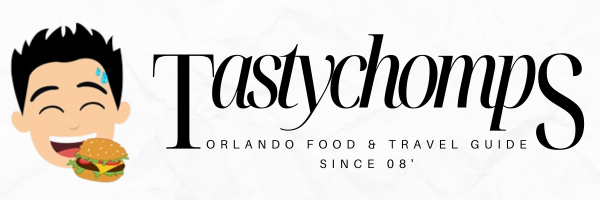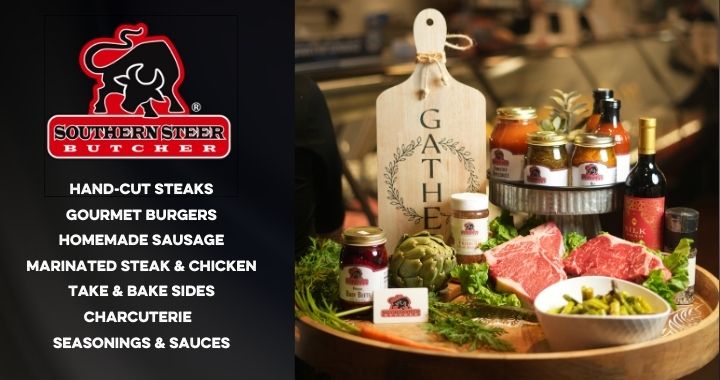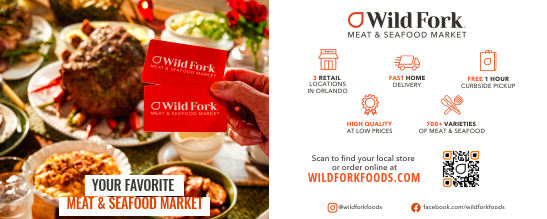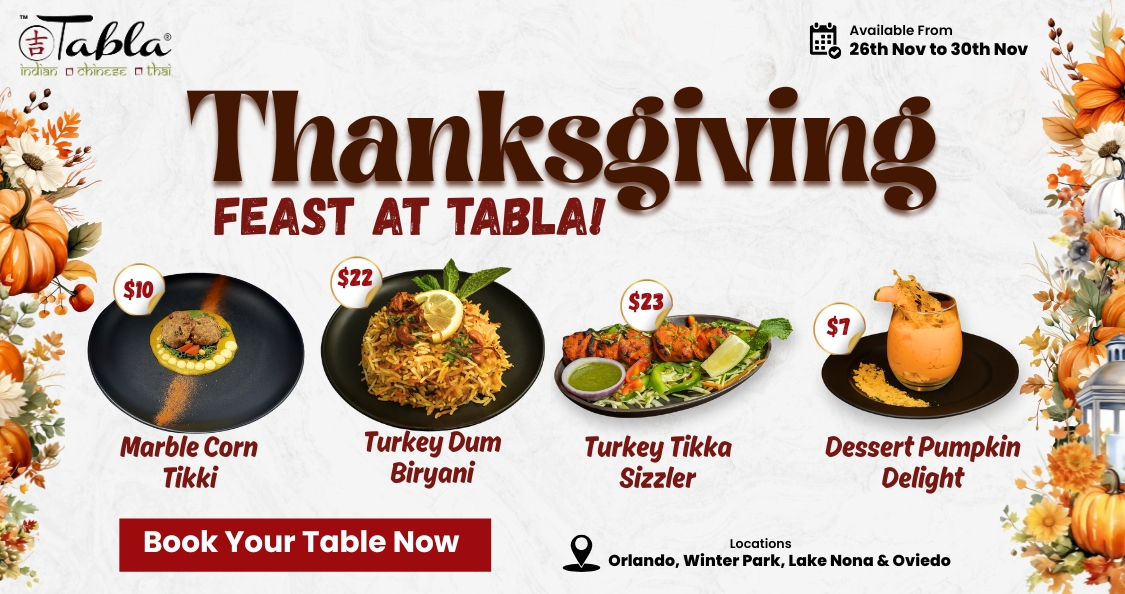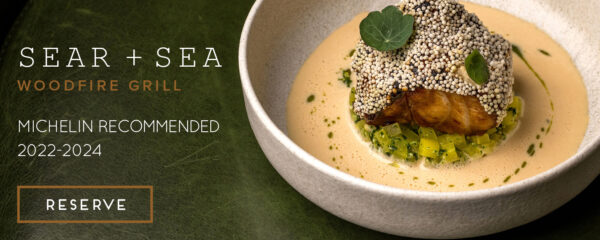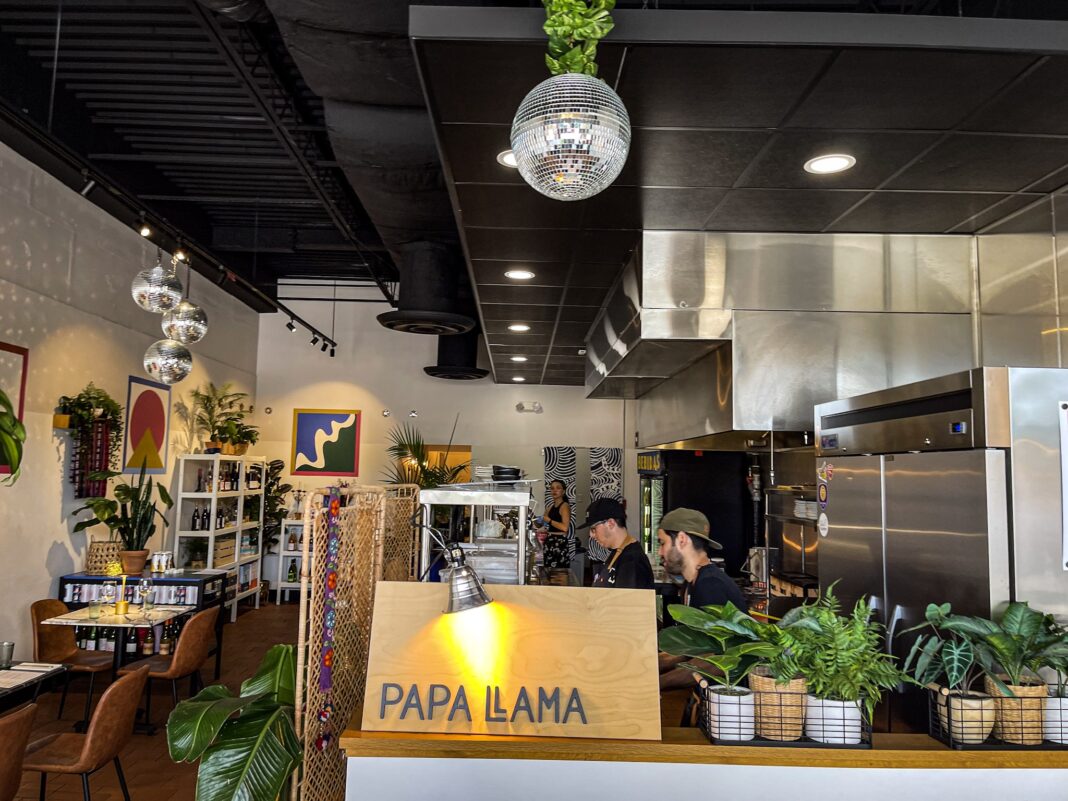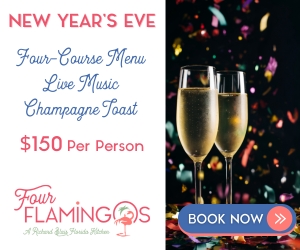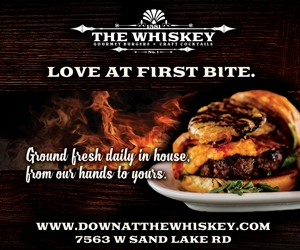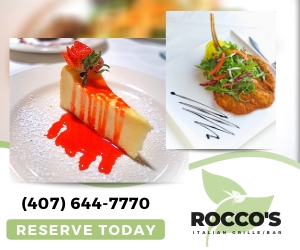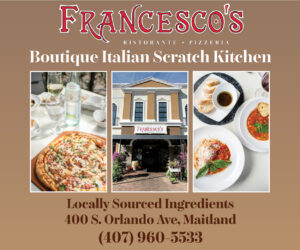Papa Llama, the modern Peruvian inspired pop-up turned acclaimed brick and mortar restaurant in Orlando, recently debuted their new fall Chef’s Tasting Menu.
We caught up with the owners – husband-and-wife team of Kevin Ruiz and Maria (Belen) Ruiz – on the inspirations as well as reactions from their recent awards and accolades, including the Michelin Guide’s Bib Gourmand award for both 2022 and 2023.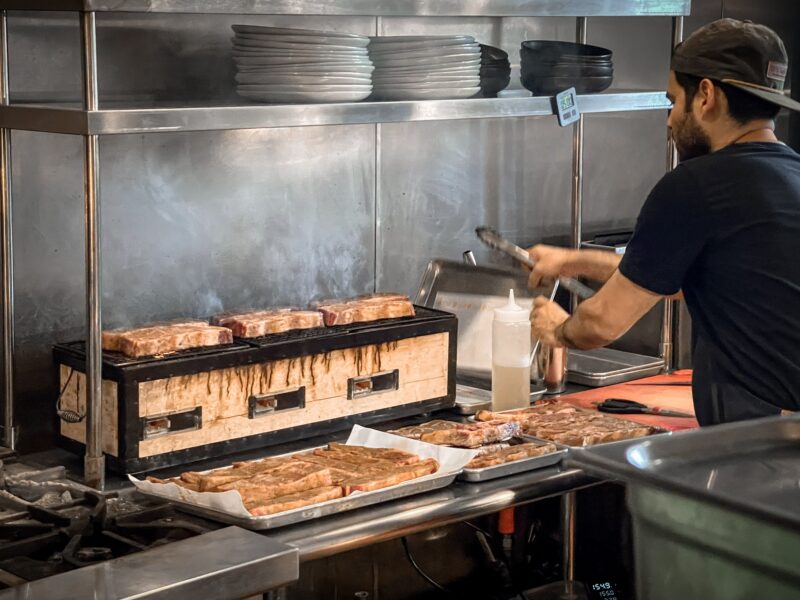
Read on to learn about their new menu – including their natural wine selection, their thoughts on authenticity, what is Peruvian cuisine, and more behind the scenes looks at Papa Llama.
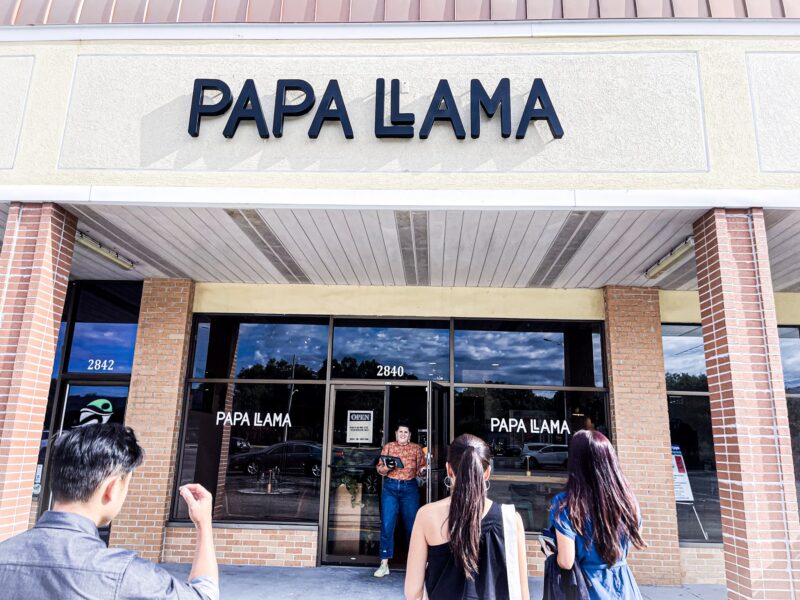
Papa Llama’s New Fall Chef’s Tasting Menu
$95 per person + tax and gratuity
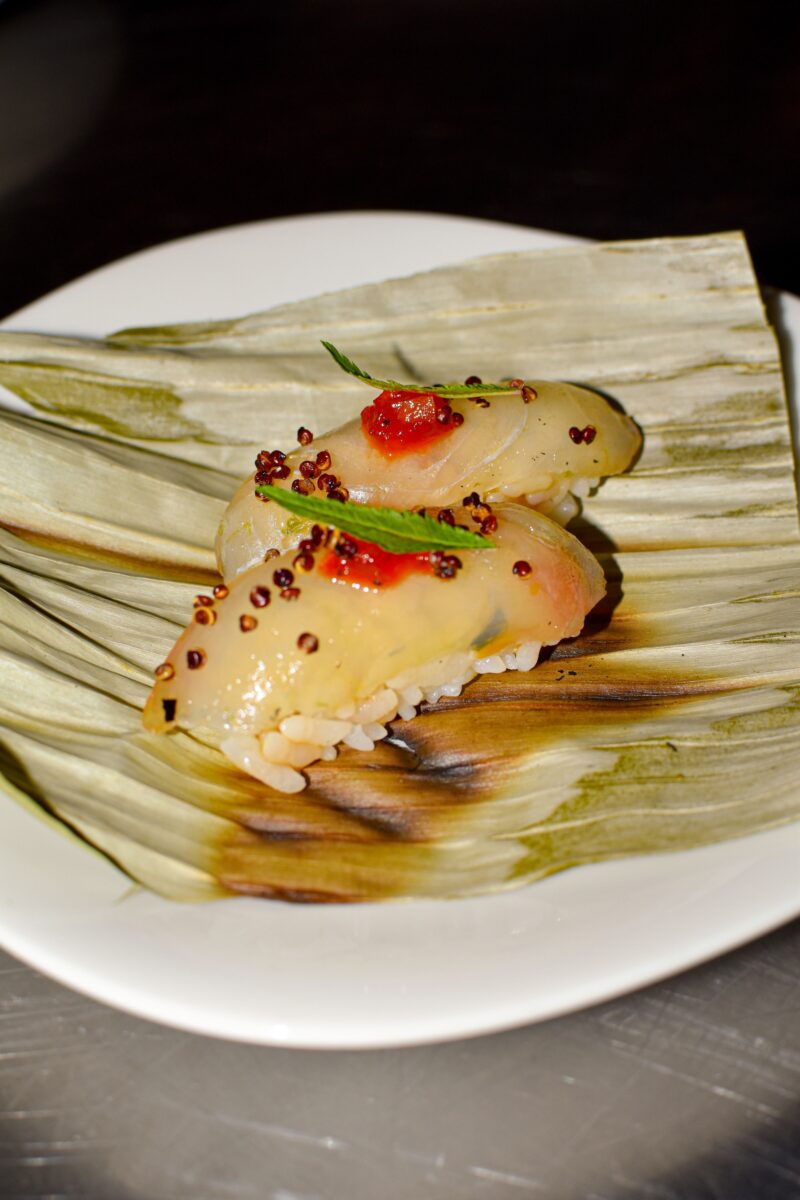
FL Genuine American Red Snapper Nigiri, crispy quinoa, rocoto jam, lemon zest*.
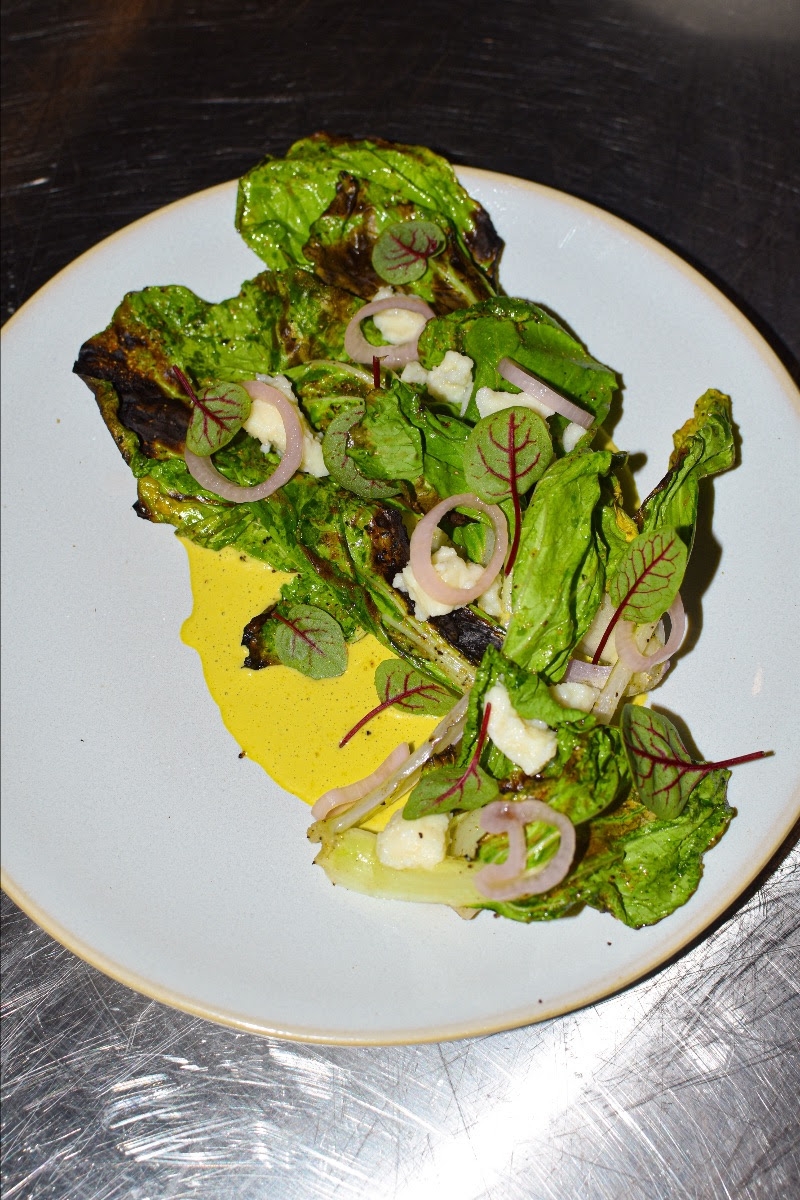
Charred FL Baby Bok Choy, ají verde, queso fresco, lime pickled shallot.
 IROC Oysters, rocoto leche de tigre, cancha.
IROC Oysters, rocoto leche de tigre, cancha.
“Pollo a la Brasa” bell & evans chicken thigh, huacatay, pollería aioli.
&
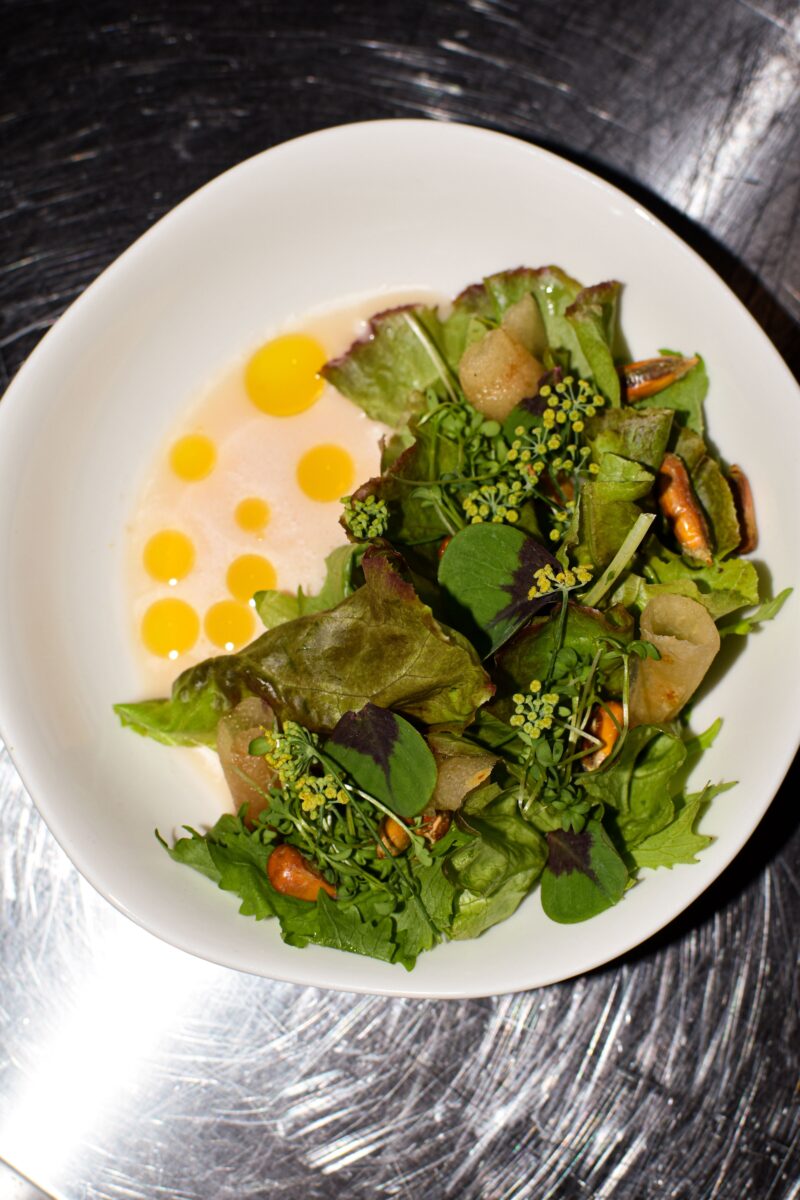 FL Greens, pickled pear, honey ají amarillo vinaigrette.
FL Greens, pickled pear, honey ají amarillo vinaigrette.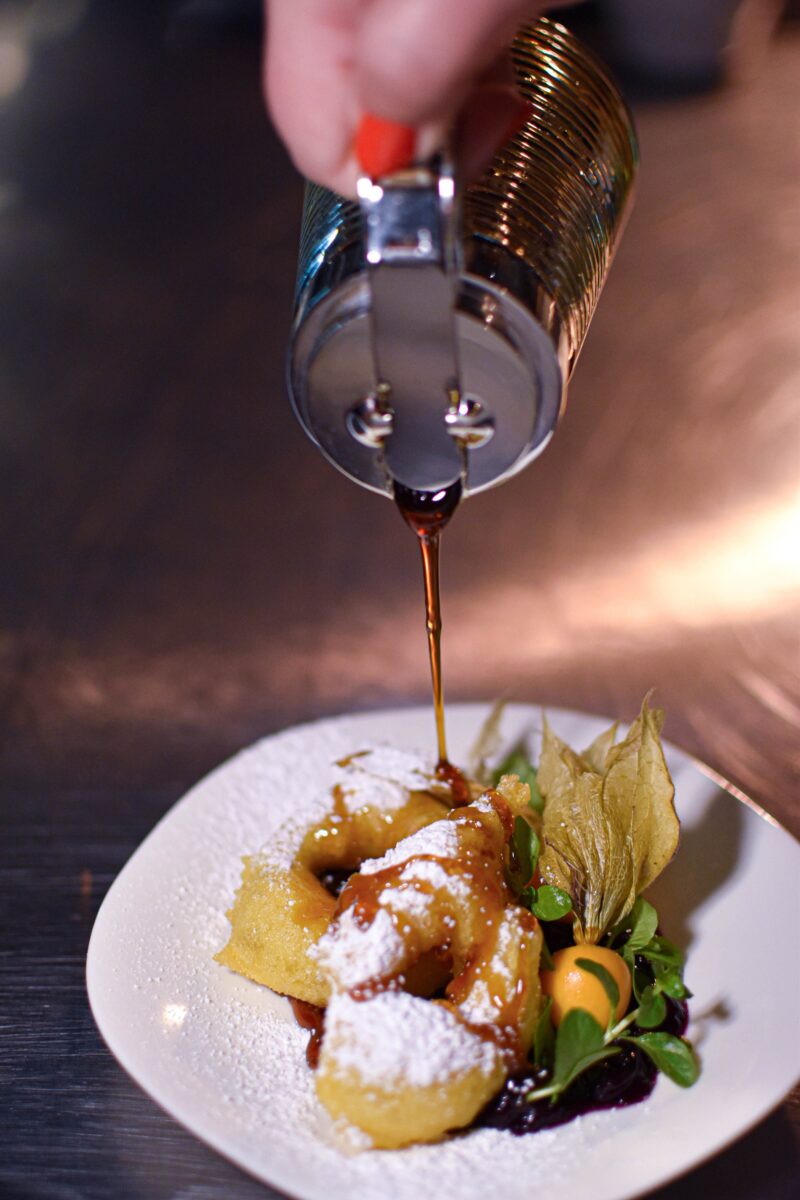
Sweet Potato Donuts, citrus + clove honey, gooseberry jam.
*Consuming raw or undercooked meats, poultry, seafood, shellfish, or eggs may increase your risk of foodborne illness, especially if you have certain medical conditions.
Please note: Item availability, ingredients, and preparation subject to change.
!! Dietary Restrictions & Food Allergies. Any substitutions or modifications must be communicated in advance. Please note not all requests can be accommodated.
+ available add-ons
Natural Wine Pairing
5 different natural wines matched to the unique flavors and rhythm of each dish
$60 per person + tax and gratuity
Tasty Chomps Q and A with Papa Llama
Tasty Chomps: Tell us about your backgrounds – what inspired you to go into the restaurant world?
Kevin and Maria: As Peruvians, food has always been a huge part of our cultural identity. Reconciling our immigrant experience within American culture brought about a different perspective. Leaning into that “third culture” (not really only Peruvian, not really only American), it showed in how we prepared traditional recipes passed down to us from previous generations. We hadn’t seen anyone doing Peruvian food quite like that, so we decided to give it a shot by launching our pop-up in 2016.
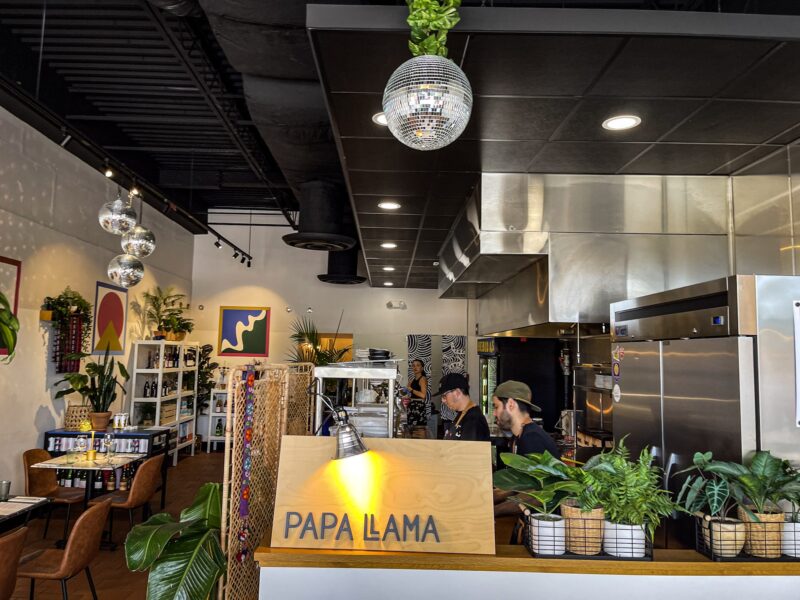
How did your restaurant begin as a pop-up experience, and what inspired you to transition into a permanent establishment?
We did our very first pop-up event at Redlight Redlight, setting up our foldable tables, tent, and pots and pans. The set up was rudimentary, but heartfelt, and Brent and Erica from Redlight were generous enough to give us a chance. It was exactly experiences like this, where we started building relationships with other Orlando-based small businesses. They are artists/ artisans that are really plugged into what they are doing. This inspired us to build our brick and mortar location within this community.
How does it feel to receive recognition from the Michelin Guide, specifically the Bib Gourmand award? How has it impacted your restaurant’s success?
MICHELIN coming to Florida was game-changing. It opened doors to customers who likely would have never crossed our path. We are extremely grateful for the Bib Gourmand nod, now two years in a row. It’s an exciting challenge that motivates us to keep topping what we did last; be better, more focused, and unapologetic for having a strong opinion about how food should be done. This will undoubtedly shape the future of Orlando cuisine, as that energy is fabulously contagious.
For someone who has never tried Peruvian cuisine before, how would you describe it to them? What are the cultural influences that can be seen in the cuisine?
Peruvian cuisine is a fascinating living, breathing story of human history and biodiversity. Peru celebrates 28 of the world’s 32 possible climates, between its coasts, jungle, desert, highlands, and tundra. There are over 4,000 varieties of potatoes, over 200 varieties of peppers, including aji charapita- the world’s most expensive pepper by weight. To start, we have a rich and complex indigenous culture, tracing across 80 different native languages and dialects. Over the course of history, major immigration waves by the Chinese, Japanese, Spanish and Italians, as well as the diaspora of African culture due to the Spanish slave trade, all had a hand in forming what is known as today’s Peruvian food. These cultural zeitgeists brought about something different to Peruvian cuisine, forming what I’d refer to as “culinary subgenres”. These culinary subgenres are not simply fusion, but rather two cultures becoming deeply embedded into each other. As an example, the blend of Chinese and Peruvian food has an entirely specific name: “Chifa”. The blend of Japanese and Peruvian food is not simply fusion either, it’s specifically called “Nikkei”. It’s a true melting pot.
Could you share some of the key Peruvian flavors and ingredients that are featured in your dishes?
We focus on “Criollo” cooking. These are popular recipes that are often served as rustic street food, with comforting aromas of aji panca, aji amarillo arising out of the smoke and sizzle of charcoal, contrasted by the bite and acid of red onion, lime, and cilantro. We apply these ingredients with both new world and old world cooking techniques, using gorgeous cuts of fish, beef, pork, chicken and fresh vegetables. These flavors are key to what turned the necks of culinary critics around the world and make Peruvian food poised to be a force to be reckoned with.
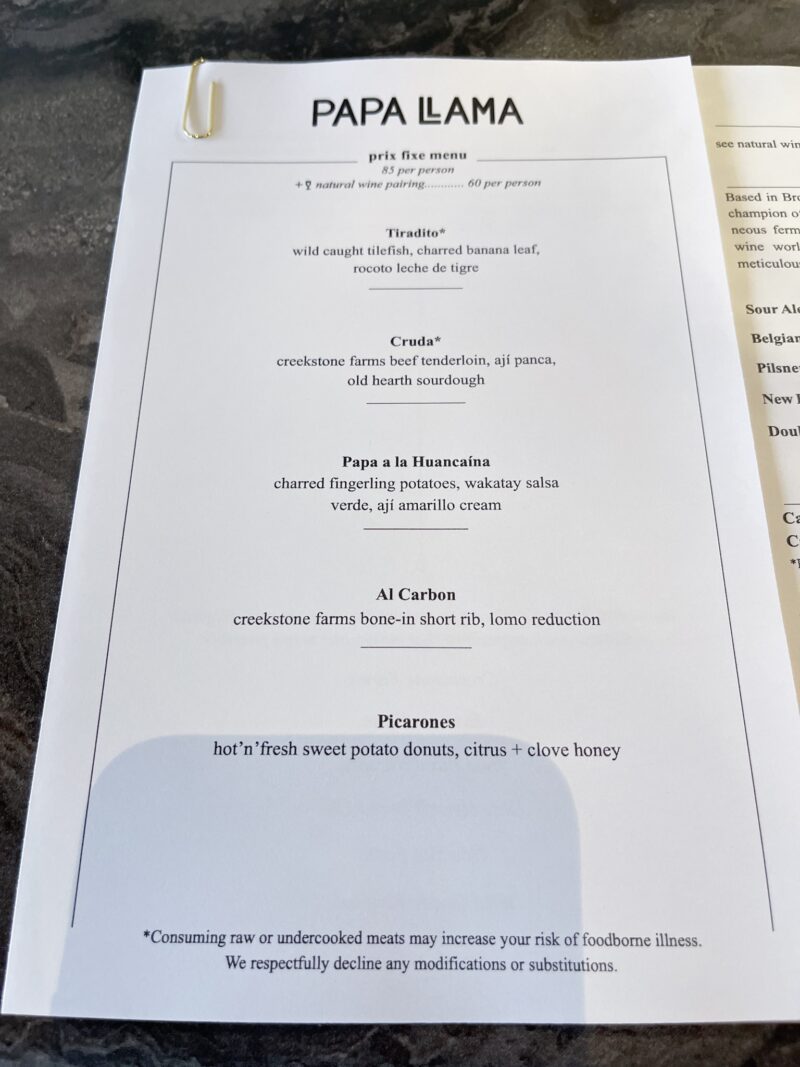
How do you ensure the authenticity and quality of your Peruvian dishes while also adapting to local ingredients and preferences?
Our kitchen is highly tuned into sourcing responsibly. Whenever possible, we go local. At all times, we focus on sustainable proteins – Florida Seafood, Heritage Berkshire Pork, Creekstone Farms Black Angus Beef, Bell & Evans Chicken. This attention to quality goes beyond our food and applies to our Beverage program as well. We heavily focus on Natural Wines. These wines match the energy and vibrancy of Peruvian flavors. Further, these producers pay special attention to detail in their agriculture, farming, and vinification process. These values run parallel to our priorities in choosing quality food ingredients. At the end of the day, farming is farming, and our standards must remain high.
Authenticity is a subjective term that we don’t throw around lightly. As building blocks, we use authentic Peruvian ingredients – specifically imported or grown spices and peppers. Now, the way we use those ingredients, the way we re-interpret classic recipes – that’s what makes our food distinctly “PAPA LLAMA”. Some would argue that isn’t “authentic”, but I think what they mean is that it’s not traditional. We’re okay with that. Instead, we focus on putting our opinion, our perspective, and our ideas onto the plate in the form of undeniably delicious food, with stellar service to match. Having a team that’s extremely aligned and bought into that vision is critical. We’ve been working with our Chef de Cuisine, Cayetano del Alcazar (also Peruvian!), since last year. Our collaboration is similar to jazz – a complex harmony of culinary technique, lived experiences growing up in a Peruvian household, and simply having great taste.
Do you have any plans to expand your menu or offer new culinary experiences in the future?
We’re always excited about growth and giving folks new things to try. Our latest prix fixe menu is a huge recent launch that we’re thrilled to offer our guests. It’s a chance to sit back, relax, and enjoy a delicious and filling dinner. The experience from end to end is intended to delight, intrigue, and leave you asking “When can I come back again?” .
Do you collaborate with local farmers, producers, or artisans to source ingredients or incorporate Peruvian products into your dishes?
Absolutely. For sourcing, we work closely with our purveyors like Cynthia Sandoval from Wild Ocean, Kelly Probst from Simple Seafood, Creekstone Farms, Inca Plant and One Sun Farm. Rising tides lift all boats, so as long as our community keeps investing in us, we happily reinvest in a healthy food ecosystem and supply chain. Since our pop-up days, we’ve collaborated with local artists like Photographer David Lawrence to capture the spirit of our brand and Designer Steve Parker for classic graphics like “LOMO FOMO” and the Llama Pez Dispenser.
Can you share any upcoming events or collaborations that customers should be excited about?
Nothing at the moment, but it’s a good idea to subscribe to our instagram. As an owner-operated restaurant with a small, nimble team, we’re always doing cool stuff that you don’t want to miss out on. https://www.instagram.com/papallamaorl/
Photos from Spring 2023 menu
 Course 01.
Course 01.
Royal Red Shrimp
from Cape Canaveral, Florida. Cilantro Ponzu Gel, Huacatay
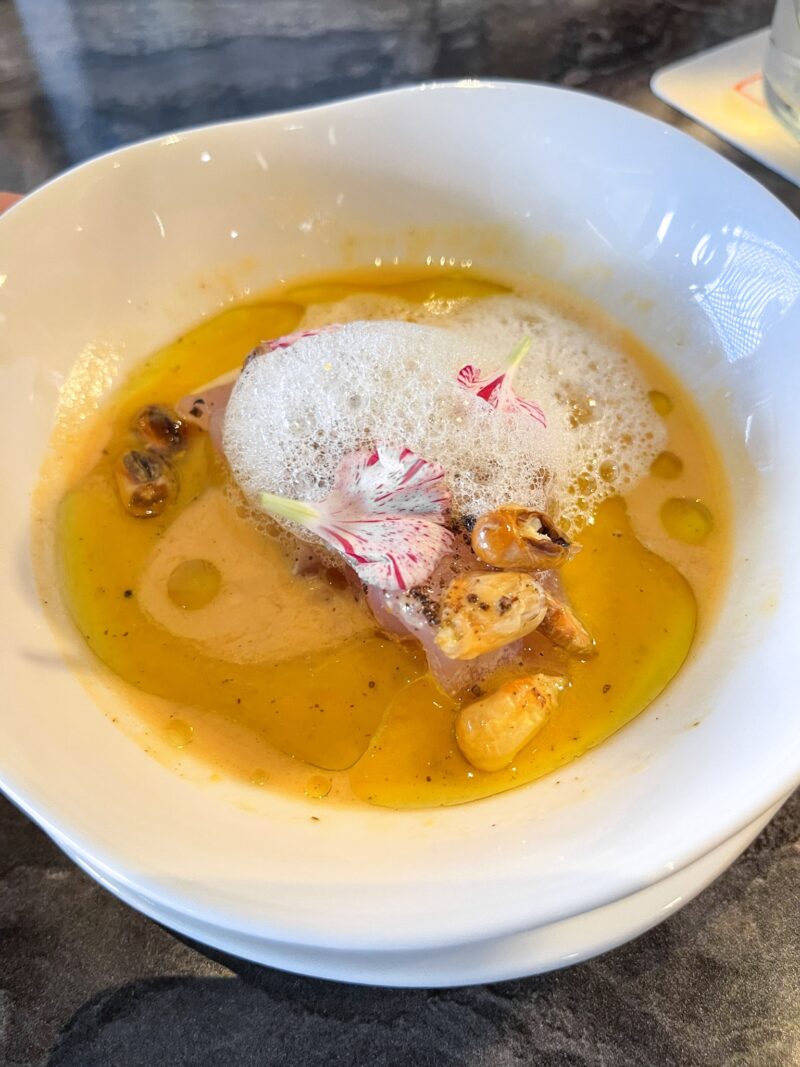 Course 02.
Course 02.
Tiradito
Flounder, hand speared, Ponce Inlet, Florida. Rocoto Leche de Tigre, Pineapple Foam, Cancha
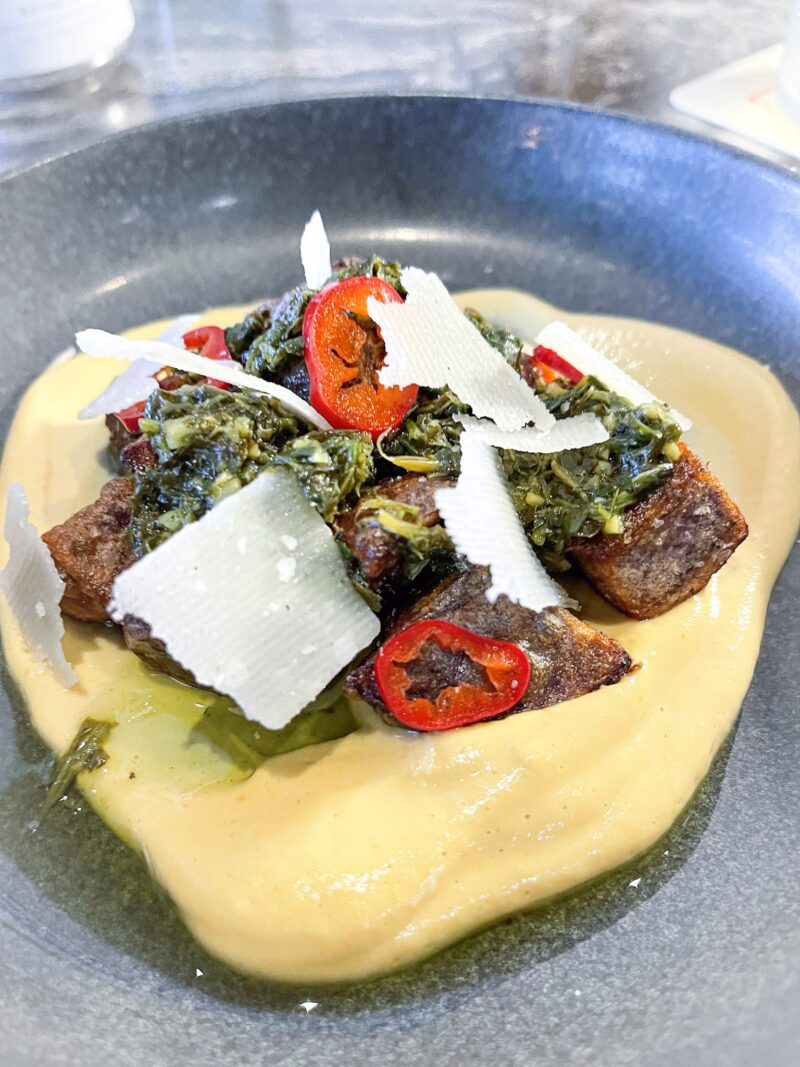
Course 03.
Cruda
Creekstone Farms Beef Tenderloin, Anticucho, Ají Limo
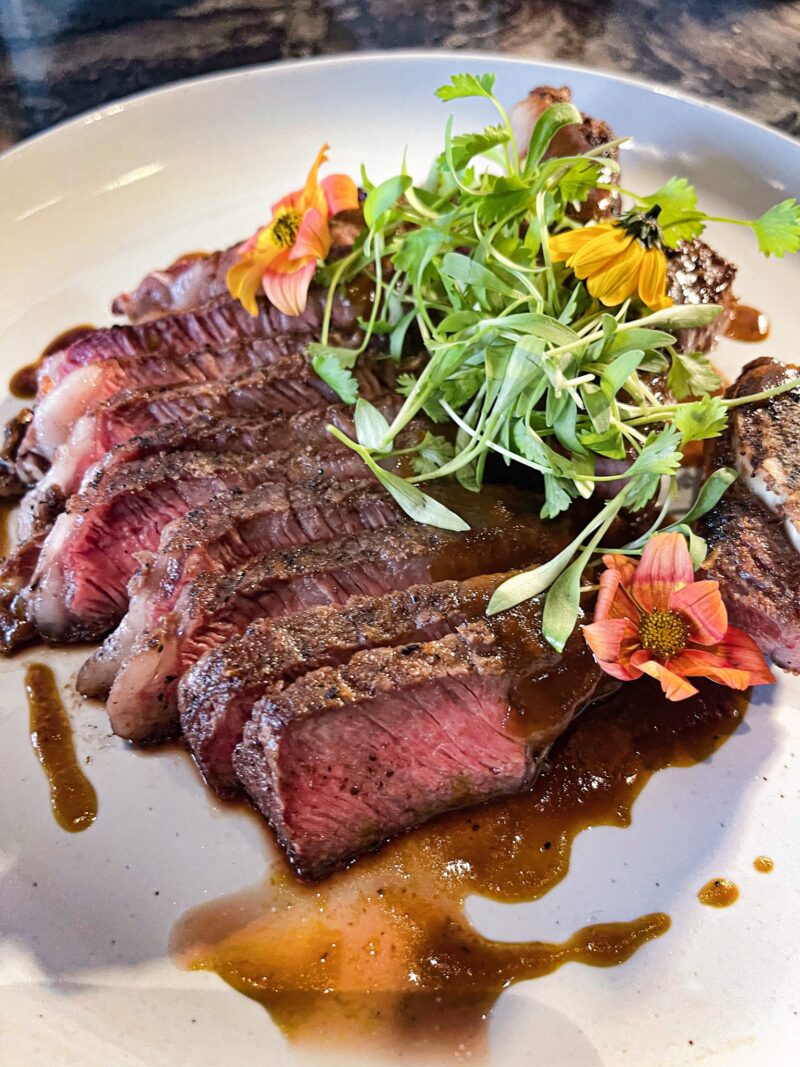 Course 04.
Course 04.
Al Carbon
Creekstone Farms Bone-In Beef Short Rib, Lomo Reduction
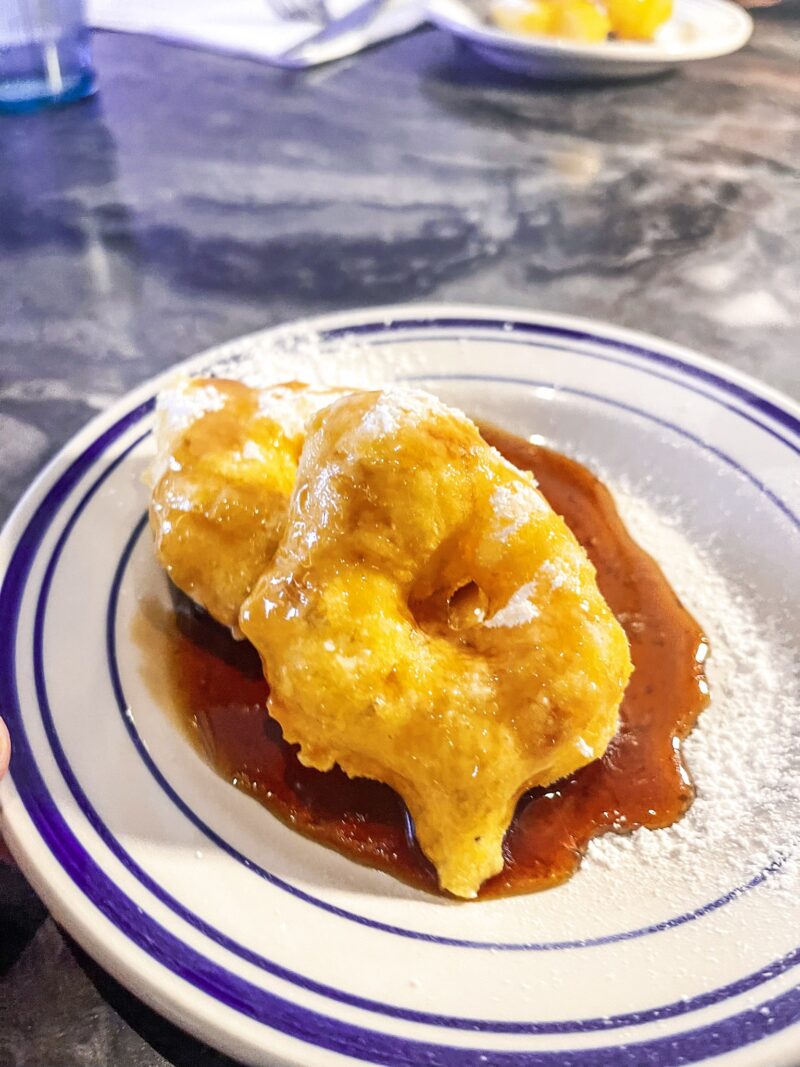 Course 05.
Course 05.
Picarones
Sweet Potato Donuts, Citrus + Clove Honey, Blueberry Compote, Aguaymanto
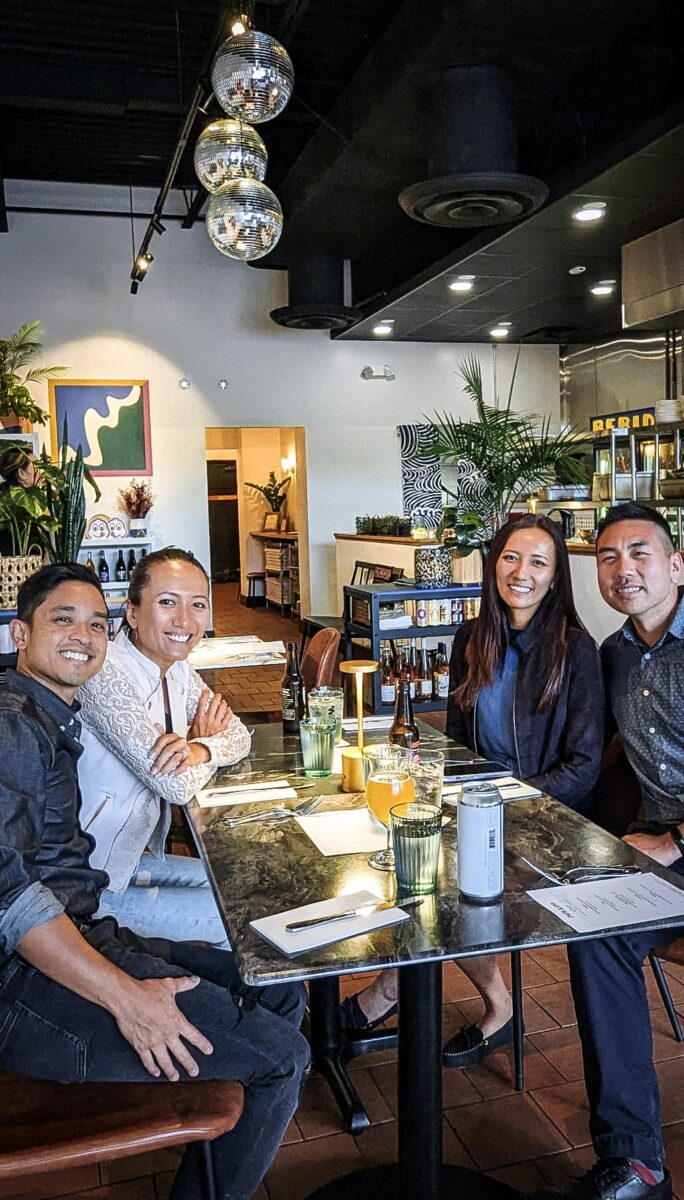
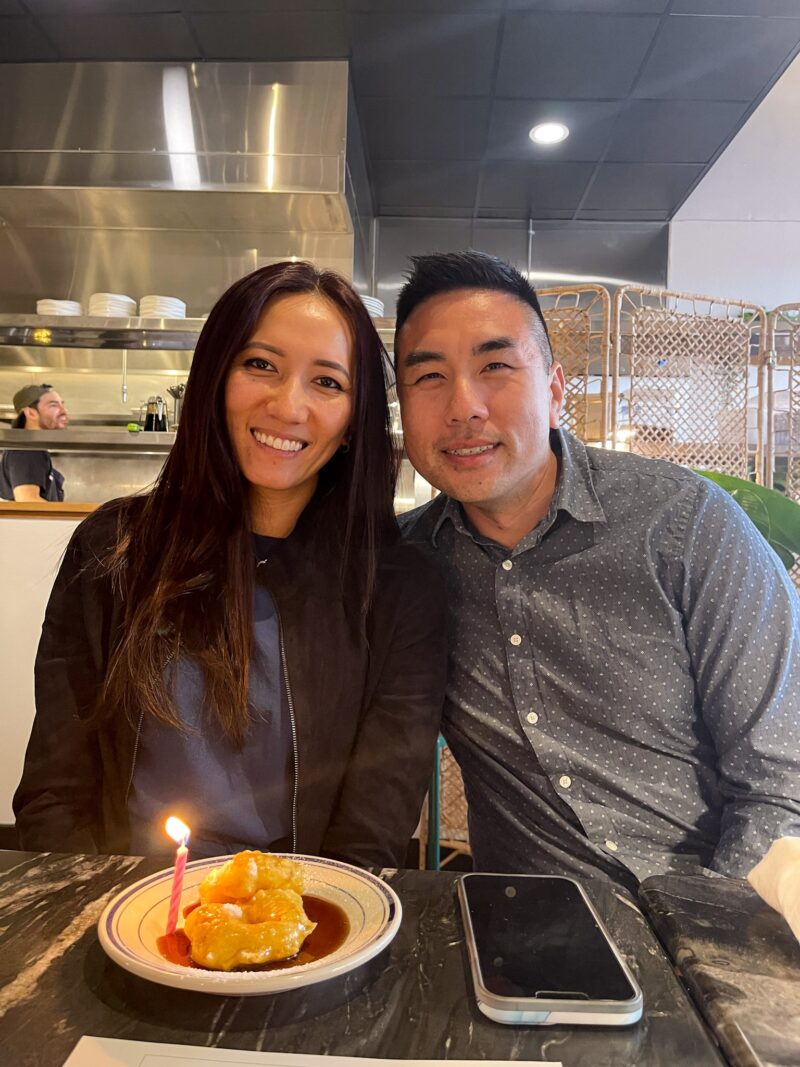
Papa Llama
- 2840 Curry Ford Rd., Orlando, 32806, USA
- https://www.instagram.com/papallamaorl/
